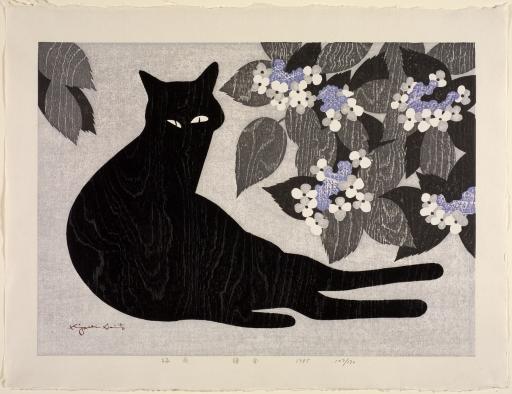梅雨、鎌倉 (Rainy Season, Tsuyu, Kamakura), Saitō Kiyoshi
Artwork Overview
Saitō Kiyoshi, artist
1907–1997
梅雨、鎌倉 (Rainy Season, Tsuyu, Kamakura),
1985, Showa period (1926–1989)
Where object was made: Japan
Material/technique: color woodcut
Dimensions:
Image Dimensions Height/Width (Height x Width): 372 x 527 mm
Sheet/Paper Dimensions (Height x Width): 469 x 606 mm
Image Dimensions Height/Width (Height x Width): 14 5/8 x 20 3/4 in
Sheet/Paper Dimensions (Height x Width): 18 7/16 x 23 7/8 in
Mat Dimensions (Height x Width): 24 x 32 in
Image Dimensions Height/Width (Height x Width): 372 x 527 mm
Sheet/Paper Dimensions (Height x Width): 469 x 606 mm
Image Dimensions Height/Width (Height x Width): 14 5/8 x 20 3/4 in
Sheet/Paper Dimensions (Height x Width): 18 7/16 x 23 7/8 in
Mat Dimensions (Height x Width): 24 x 32 in
Credit line: Gift of Hal M. Davison, Class of 1949
Accession number: 1998.0815
Not on display
If you wish to reproduce this image, please submit an image request


